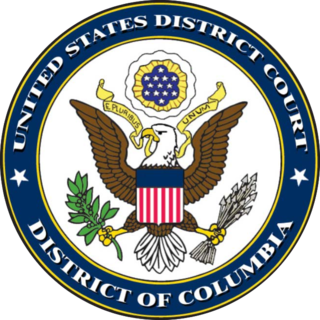Negligence is a failure to exercise appropriate care expected to be exercised in similar circumstances.
A tort is a civil wrong that causes a claimant to suffer loss or harm, resulting in legal liability for the person who commits the tortious act. Tort law can be contrasted with criminal law, which deals with criminal wrongs that are punishable by the state. While criminal law aims to punish individuals who commit crimes, tort law aims to compensate individuals who suffer harm as a result of the actions of others. Some wrongful acts, such as assault and battery, can result in both a civil lawsuit and a criminal prosecution in countries where the civil and criminal legal systems are separate. Tort law may also be contrasted with contract law, which provides civil remedies after breach of a duty that arises from a contract. Obligations in both tort and criminal law are more fundamental and are imposed regardless of whether the parties have a contract.
Intentional infliction of emotional distress is a common law tort that allows individuals to recover for severe emotional distress caused by another individual who intentionally or recklessly inflicted emotional distress by behaving in an "extreme and outrageous" way. Some courts and commentators have substituted mental for emotional, but the tort is the same.
This article addresses torts in United States law. As such, it covers primarily common law. Moreover, it provides general rules, as individual states all have separate civil codes. There are three general categories of torts: intentional torts, negligence, and strict liability torts.
The tort of negligent infliction of emotional distress (NIED) is a controversial cause of action, which is available in nearly all U.S. states but is severely constrained and limited in the majority of them. The underlying concept is that one has a legal duty to use reasonable care to avoid causing emotional distress to another individual. If one fails in this duty and unreasonably causes emotional distress to another person, that actor will be liable for monetary damages to the injured individual. The tort is to be contrasted with intentional infliction of emotional distress in that there is no need to prove intent to inflict distress. That is, an accidental infliction, if negligent, is sufficient to support a cause of action.
An intentional tort is a category of torts that describes a civil wrong resulting from an intentional act on the part of the tortfeasor. The term negligence, on the other hand, pertains to a tort that simply results from the failure of the tortfeasor to take sufficient care in fulfilling a duty owed, while strict liability torts refers to situations where a party is liable for injuries no matter what precautions were taken.
Tortious interference, also known as intentional interference with contractual relations, in the common law of torts, occurs when one person intentionally damages someone else's contractual or business relationships with a third party, causing economic harm. As an example, someone could use blackmail to induce a contractor into breaking a contract; they could threaten a supplier to prevent them from supplying goods or services to another party; or they could obstruct someone's ability to honor a contract with a client by deliberately refusing to deliver necessary goods.

Personal injury is a legal term for an injury to the body, mind, or emotions, as opposed to an injury to property. In common law jurisdictions the term is most commonly used to refer to a type of tort lawsuit in which the person bringing the suit has suffered harm to their body or mind. Personal injury lawsuits are filed against the person or entity that caused the harm through negligence, gross negligence, reckless conduct, or intentional misconduct, and in some cases on the basis of strict liability. Different jurisdictions describe the damages in different ways, but damages typically include the injured person's medical bills, pain and suffering, and diminished quality of life.
Wrongful life is the name given to a cause of action in which someone is sued by a severely disabled child for failing to prevent the child's birth. Typically, a child and the child's parents will sue a doctor or a hospital for failing to provide information about the disability during the pregnancy, or a genetic disposition before the pregnancy. Had the mother been aware of this information, it is argued, she would have had an abortion, or chosen not to conceive at all.

Canadian tort law is composed of two parallel systems: a common law framework outside Québec and a civil law framework within Québec. Outside Québec, Canadian tort law originally derives from that of England and Wales but has developed distinctly since Canadian Confederation in 1867 and has been influenced by jurisprudence in other common law jurisdictions. Meanwhile, while private law as a whole in Québec was originally derived from that which existed in France at the time of Québec's annexation into the British Empire, it was overhauled and codified first in the Civil Code of Lower Canada and later in the current Civil Code of Quebec, which codifies most elements of tort law as part of its provisions on the broader law of obligations. As most aspects of tort law in Canada are the subject of provincial jurisdiction under the Canadian Constitution, tort law varies even between the country's common law provinces and territories.
In English law, a nervous shock is a psychiatric / mental illness or injury inflicted upon a person by intentional or negligent actions or omissions of another. Often it is a psychiatric disorder triggered by witnessing an accident, for example an injury caused to one's parents or spouse. Although the term "nervous shock" has been described as "inaccurate" and "misleading", it continues to be applied as a useful abbreviation for a complex concept. The possibility of recovering damages for nervous shock, particularly caused by negligence, is strongly limited in English law.
The following outline is provided as an overview of and introduction to tort law in common law jurisdictions:

Atban v. Blackwater, 611 F. Supp. 2d 1, was a lawsuit brought by the victims and families affected by the September 16, 2007 Blackwater Baghdad shootings against Blackwater Worldwide, a private military contractor since renamed Academi. The case was consolidated with Estate of Albazzaz, et al. v. Blackwater Lodge and Training Center, Inc. et al., and the consolidated case was ultimately settled confidentially out of court.
Wrongful birth is a legal cause of action in some common law countries in which the parents of a congenitally diseased child claim that their doctor failed to properly warn of their risk of conceiving or giving birth to a child with serious genetic or congenital abnormalities. Thus, the plaintiffs claim, the defendant prevented them from making a truly informed decision as to whether or not to have the child. Wrongful birth is a type of medical malpractice tort. It is distinguished from wrongful life, in which the child sues the doctor.
Dillon v. Legg, 68 Cal. 2d 728 (1968), was a case decided by the Supreme Court of California that established the tort of negligent infliction of emotional distress. To date, it is the most persuasive decision of the most persuasive state supreme court in the United States during the latter half of the 20th century: Dillon has been favorably cited and followed by at least twenty reported out-of-state appellate decisions, more than any other California appellate decision in the period from 1940 to 2005. It was also favorably cited by the House of Lords in an important case on nervous shock, McLoughlin v O'Brian [1983].
Thing v. La Chusa, 48 Cal. 3d 644 (1989), was a case decided by the Supreme Court of California that limited the scope of the tort of negligent infliction of emotional distress. The majority opinion was authored by Associate Justice David Eagleson, and it is regarded as his single most famous opinion and representative of his conservative judicial philosophy.
Molien v. Kaiser Foundation Hospitals, 27 Cal. 3d 916 (1980), was a case decided by the Supreme Court of California that first recognized that a "direct victim" of negligence can recover damages for emotional distress without an accompanying physical injury.

Archibald v. Braverman, 275 Cal. App. 2d 253 (1969), was a case decided by the California Court of Appeals that first ruled that visual perception of an accident was not a necessary prerequisite to recovery for negligent infliction of emotional distress under the criteria enunciated in Dillon v. Legg. The holding in Archibald was later overruled by the 1989 case Thing v. La Chusa.

The eggshell rule is a well-established legal doctrine in common law, used in some tort law systems, with a similar doctrine applicable to criminal law. The rule states that, in a tort case, the unexpected frailty of the injured person is not a valid defense to the seriousness of any injury caused to them.

Smith v. Summit Entertainment LLC, No. 3:11-cv-00348, was a case heard by the United States District Court for the Northern District of Ohio, in which professional singer Matthew Smith, known as Matt Heart, sued Summit Entertainment. Smith asserted seven causes of action for Summit Entertainment's wrongful use of copyright takedown notice on the website YouTube, among which three were dismissed and four were ruled in Smith's favor. The case is noteworthy given that copyright 17 U.S.C. § 512 claims are hard to win, and the plaintiff's success was due to the combination of his persuasive story and convincing additional claims which complemented § 512.






